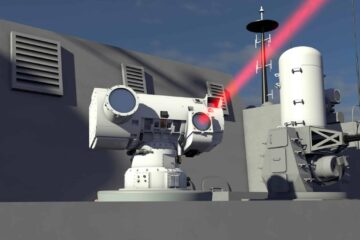MBDA press release
The first of these trials recently conducted by the Dragonfire consortium – a joint industry and UK MOD collaboration between MBDA, Leonardo, QinetiQ and Dstl – at low power proved the system can successfully track air and sea targets with exceptionally high accuracy.
This success has paved the way for the next phase of the trials that will deliver a first for UK industry when carrying out a static high power laser trial, while maintaining aimpoint accuracy. The next step would then look to combine the outcomes of these two trials, pairing the recently proven tracking accuracy and the high power laser, by engaging targets in operationally representative scenarios.
Chris Allam, Managing Director of MBDA UK, said,
“The success of these trials is a key step in the development of sovereign laser directed energy weapons. It is the culmination of a lot of hard work from both the industry and Dstl teams, overcoming disruption due to COVID and technical challenges from the use of unique innovations in Dragonfire that are testing the very limits of what is physically possible in the laser weapons domain.”
The essential challenge of an LDEW system is safely controlling and focusing high laser power onto an extremely precise point, at long range. The tracking trial was an excellent test of the component parts of the Dragonfire tracking system working together to do this.
This trial used a low power QinetiQ laser, Leonardo’s beam director and MBDAs Image Processing and Control technology to facilitate the ultra-precise “fine” pointing and tracking accuracy, which will be required to generate the damage effect when a high-powered laser will be used.
Other sub systems including the C2, Effector Management System (EMS) and “coarse” tracking – turning the laser towards the target – were also proved in the trial.






